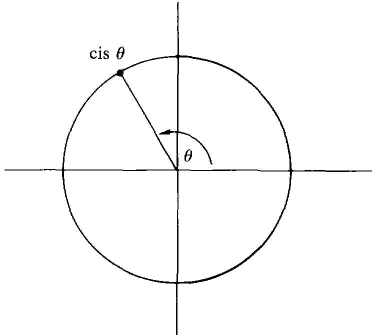| The ebook Elementary Calculus is based on material originally written by H.J. Keisler. For more information please read the copyright pages. |

|

Home  Differential Equations Differential Equations  Complex Numbers Complex Numbers  Examples Examples  Example 3 Example 3 |
|






|
|
Example 3
Find the roots of the polynomial z2 + z + 2 in the complex number system.
It is often useful to represent a complex number in polar form. A point (x, y) in the plane has polar coordinates (r, θ) where x = r cos θ, y = r sin θ. The complex number x + iy may be written in the polar form x + iy = r(cos θ + i sin θ). The coordinates r and θ can always be chosen so that r ≥ 0 and -π < θ ≤ π. The number r, which is the distance of the point (x, y) from the origin, is the absolute value of the complex number x + iy: r= |x + iy| = (x2 +y2)1/2. The formula (1) for the product of a complex number and its conjugate may now be written in the short form
The real number θ is an angle in radians and is called the argument of x + iy. The argument can be computed by using the formula tan (y/x) = θ, and then choosing θ in the correct quadrant. The polar form of a complex number is illustrated in Figure 14.5.2. This figure is sometimes called the Argand diagram of the complex number. The complex number with absolute value one and argument θ is sometimes called cis θ: cis θ = cos θ + i sin θ.
Figure 14.5.2 In Figure 14.5.3, we see that in the complex plane, cis θ is on the unit circle at an angle θ counterclockwise from the x-axis. Using the symbol cis θ, the polar form can be written x + iy = r cis θ.
Figure 14.5.3
|
|
Home  Differential Equations Differential Equations  Complex Numbers Complex Numbers  Examples Examples  Example 3 Example 3 |
|
Last Update: 2006-11-16





